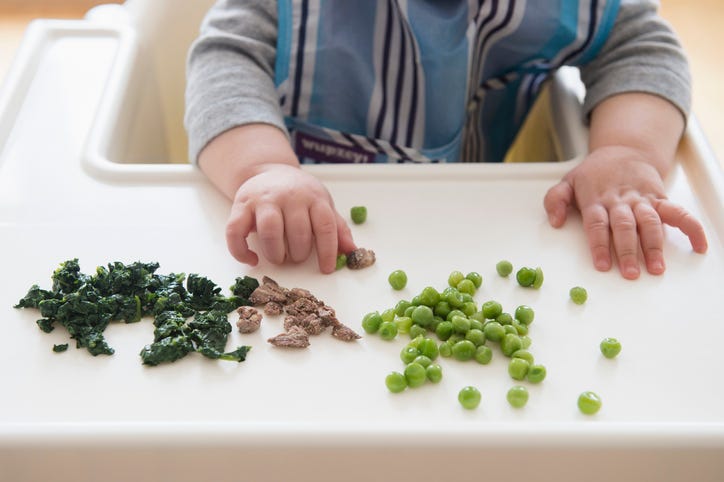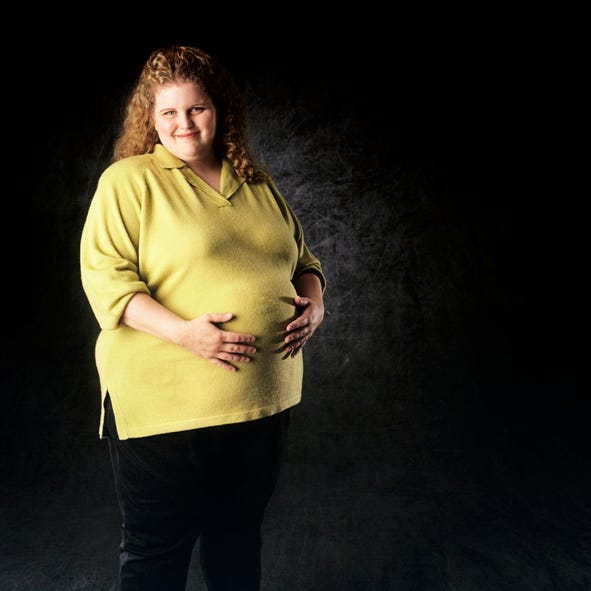Disclaimer: You’re reading this column because you value my input as a journalist who reports on these issues and therefore has a lot of informed opinions. I’m not a healthcare provider and these responses are not meant to substitute for medical or therapeutic advice.

Q: I’m curious for your thoughts about the hardcore baby-led weaning accounts on Instagram. I see a lot of posts on “how to introduce your baby to branzino.” There’s also talk of not serving babies bread because it “steals the show,” and how you can never serve dried fruit with fresh fruit because (again) it steals the show. Also the expectation that you should perfectly curate your baby’s first 100 foods? This seems like INTENSE stealth-diet culture, under this new guise of ensuring that your child will never, ever be “picky?”
Yep. In many online conversations, baby-led weaning (BLW) has become diet culture indoctrination. The original book on the topic sowed some seeds for this, but expectations that your baby should love branzino and portobello mushrooms, or that you should be diligently working through a list of baby superfoods, are absolutely a manifestation of Kid Food Instagram. And this is such a disappointment because it didn’t have to be this way.
I discovered BLW when we were trying to wean our older daughter off her feeding tube. For many reasons, we couldn’t follow it to the letter: BLW wants you offering small pieces of food that babies can pick up and explore with their hands and mouths. For most of her infancy, my daughter’s oral aversion was so intense that she wasn’t willingly putting anything anywhere near her mouth, including her own hands. But the ethos of “baby-led” resonated because it was so clear that we, as parents, could not lead this child to eat. As I’ve written before, it was only by following her cues, most of which translated to “get that away from me,” that we were able to work, very slowly, towards oral eating. She ate when food in her mouth no longer felt dangerous. She ate when she learned once again to equate eating with comfort and pleasure. She ate when she was ready.
And: She ate food that tasted good to her. The reason for this is obvious. If it doesn’t taste good, it doesn’t feel safe. Learning to eat requires even typically developing infants to take a pretty big leap of faith, and start putting all these different tastes and textures in their mouths when one milky texture is all they’ve known. If it’s not immediately rewarding, why take that risk? This is why many kids with feeding issues (or not!) gravitate first towards foods like Cheerios, puffs, and Cheetos: They are low risk (because they melt in your mouth), but high reward in terms of flavor and satisfaction. One way to understand the importance of food tasting good is to lean into offering foods that are easy for babies to like: Bananas, cereal, pasta and (once they have the chewing ability) bread. Another approach is to decide that it’s your job to reprogram what tastes good for your baby.
This is the message that Kid Food Instagram tends to push. They teach that we should back away from our kids’ preferences for sweets and carbs, and redirect them instead, to love elderberry and kale. They promise that BLW will “prevent picky eating.” But what this really means is that BLW will prevent your child from eating the foods that diet culture demonizes—which also happen to be the foods kids tend to like best. I get press releases every month warning about “the rise in picky eating.” But it’s not at all clear to me that kids today are actually pickier than we were a generation ago. (I, for one, ate almost nothing but spaghetti, white bread, and strawberry yogurt until I was 12.) What has changed is parents’ expectations about how kids should eat, and the pressure we feel to perform our parenting through our children’s eating habits.
Let’s also be clear: These promises very often fall short. Achieving this kind of gold standard BLW is only even slightly possible if you can retain total control over your child’s feeding experience. If you have a child in daycare, a child with older siblings eating differently, a child fed by other caregivers, this all gets complicated fast. In this way, the pressure to BLW builds on the pressure to exclusively breastfeed: Both turn feeding children into work that only one person—the parent with breasts, the parent with the resources to research and execute BLW—can do. Both attach moral value to what should be practical and emotional decisions. And both devalue this parent’s labor by framing these approaches as “free,” or cheaper than purchasing formula and storebought baby food. But that’s only true if you decide that the time of the person doing this work is worthless.
Does every social media account that promotes BLW entangle themselves with diet culture and the oppression of parents, especially mothers? Of course not. I appreciate the work of @feedinglittles and @yummytoddlerfood, both of which discuss BLW as an option that works for many, but not all, families, and are careful to pair it with lots of anti-diet messaging.
But I’d be wary of any account that frames BLW (or any other feeding strategy) as the one right way to do this incredibly difficult, time-consuming and personalized task. Letting my older child experiment with self-feeding was, ultimately, a crucial tool in helping her learn to eat by mouth. But so were storebought baby food pouches—those often maligned symbol of “bad food” and “lazy parenting”—because they were the first “meal” she could entirely, successfully, self-feed.

Q: How should I handle it when people congratulate me for being pregnant? Because I'm not. And… this happens to me all the time.
It happens to me all the time, too. And if I’m being honest, I have only once felt like I nailed my reply. So I’m going to start by telling you the story of Terrible Norm.
Terrible Norm is the guy we hired to fix our well when it broke in the middle of the pandemic, leaving us without running water for a week. All of the bigger well companies in our area were swamped to the point of not returning calls, but Terrible Norm called back and showed up. That is the only nice thing I have to say about him, because when I say “show up,” I mean he drove his car straight onto our lawn (overshooting the driveway by about ten feet and narrowly missing running over my then-three-year-old playing on the grass). Then he got out, scowled at me, and said, “Bun in the oven, huh?”



